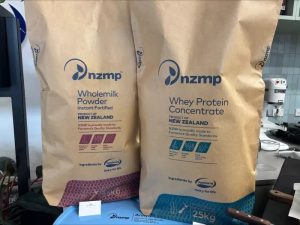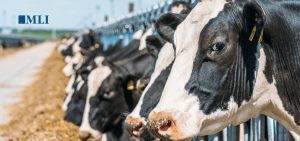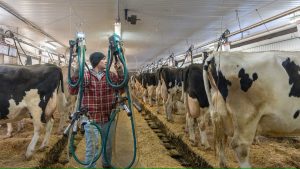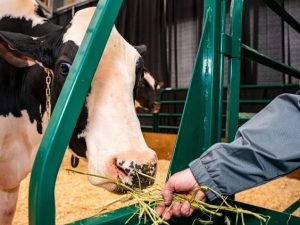
A state-of-the-art milk concentration plant under construction near Blackfalds has been billed as a game changer for Western Canada’s dairy industry.
Besides providing a much-needed processing facility for dairy producers, the Dairy Innovation West (DIW) plant will introduce new technology to Canada that will have a major environmental payoff. It is also being touted as an example of what can be achieved when milk producers from four provinces come together.
Construction began last December on the $75-million dewatering plant in Lacombe County’s Aspelund Industrial Park on the west side of the highway. Testing, first with water and then milk, will begin in January 2025 and take several months in preparation for an official spring opening.
When fully operational, the plant will be able to concentrate up to 300 million litres of milk annually and will provide a huge boost to dairy producers in Alberta and beyond.
DIW chair Henry Holtmann said the challenge in Alberta is that there is not enough processing capacity for the milk produced by the province’s 500 dairy producers, including many in central Alberta.
When finding a milk processor ready to invest in a new plant proved difficult, the Western Milk Pool, a collaboration between BC Milk, BC Dairy, Alberta Milk, SaskMilk and Dairy Farmers of Manitoba, joined forces to build their own plant.
Central Alberta was a logical choice.
“We know that area between Red Deer and Edmonton,” said Holtmann. “There’s lot of dairy production and it was the perfect spot to put something there.”
Being a short drive away from a processor will be welcomed, especially by Central Alberta producers, who have routinely had to truck their raw milk to Abbotsford, B.C. or Saskatoon.
Once operational, dairy deliveries could come from producers from any of the four provinces represented by Western Milk Pool.
Increasing raw milk processing capacity will also allow more expansion further down the processing chain, which in turn, could trickle down into higher quotas for dairy producers, who will now be looking to ensure they have the milk to supply the plant.
“These are exciting times because that helps the local economy when farmers start looking at how can I produce that milk and participate,” he said.
DIW offers a range of advantages to producers. By dewatering milk and reducing its volume by as much as 75 per cent to create a concentrate, the cost of transporting milk to the processors who will turn it into products such as skim milk powder, cheese and butter will be slashed.
For every three or four trucks full of raw milk coming into the plant, only one is needed to take the finished concentrate to next-stage processors. In diesel bills alone, the savings will be huge.
Taking thousands of trucks off Western Canada’s highways will also reap big environmental benefits by reducing emissions and edging the dairy industry closer to its goal of achieving net zero by 2050.
The technology that concentrates milk through ultra-filtration and osmosis technologies has been used elsewhere but this is the first time it will be used in Canada.
Holtmann said one of the biggest achievements of the whole project was the complicated task of bringing together four provinces, each with their own regulations.
“We tend to do things as provinces in Canada on our own, but for four provinces to work together and do this is a feat in itself.”
You can now read the most important #news on #eDairyNews #Whatsapp channels!!!
🇺🇸 eDairy News INGLÊS: https://whatsapp.com/channel/0029VaKsjzGDTkJyIN6hcP1K

























